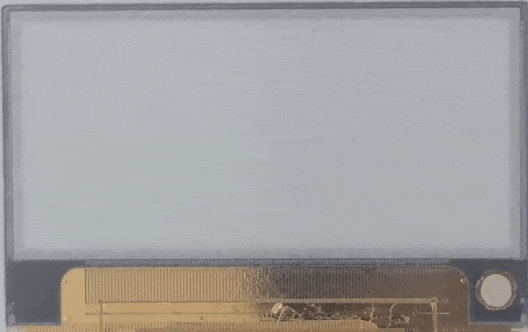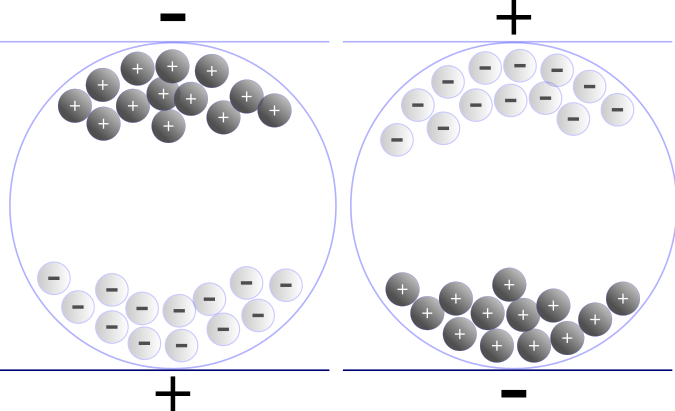This time in e-paper basics we want to talk about gray levels. To understand gray levels we need to take a quick look into the inner workings of EPDs (electrophoretic displays or commonly known as e-paper).
(by Senarclens; CC-BY-SA 3.0)
Our display roughly consists of a backplane (a transistor matrix on a plastic substrate, pretty cool stuff btw) and so called media laminated on top of it. The media is the part that we see. Inside the media are charged particles (black and white ones). We use the transistor array to charge capacitors, which generate electric fields. These fields make the particles move (as shown in the picture above).
In the picture you can see the two extreme cases. In the left one all black particles are on the top; we can see a black pixel. On the right side all white particles are on top; we see a white pixel. Now, what happens when you don't drive the particles to the extremes but mix them in the middle? You guessed it: You get different shades of gray.
Most display manufacturer only let you use black and white. We are very happy, that our display supplier gives us the freedom to also use shades of gray.
The display controller let's us drive four different gray levels (otherwise known as 2-bit gray scale) and they look like this:

(If you read our last e-paper basics on update modes you notice how we use both full updates and partial updates in this demo.)
 Markus
Markus
Discussions
Become a Hackaday.io Member
Create an account to leave a comment. Already have an account? Log In.